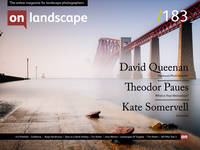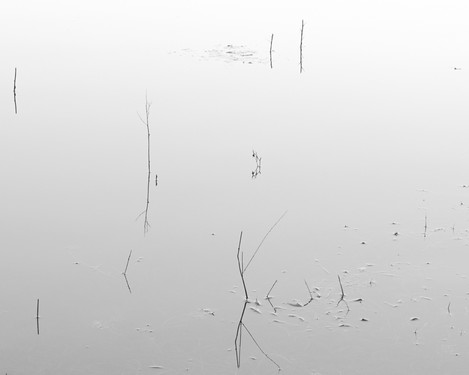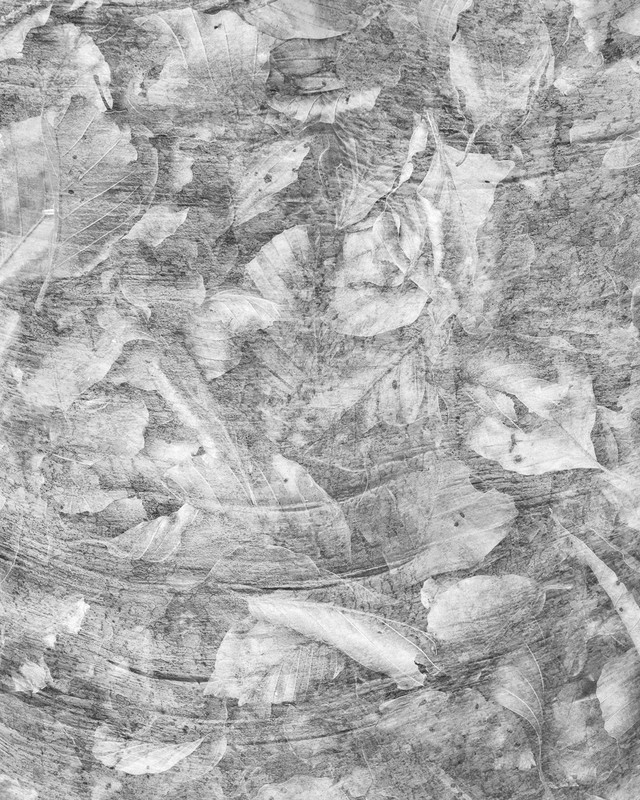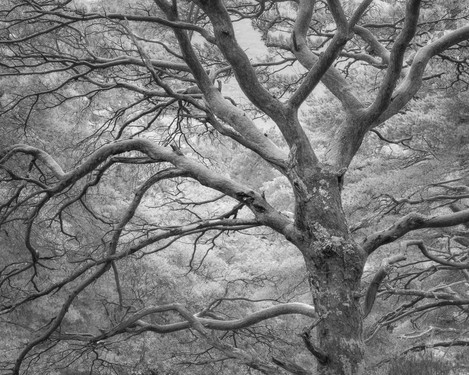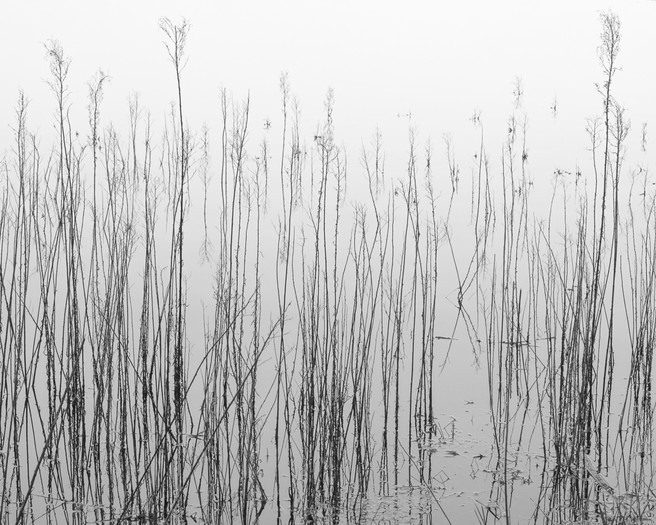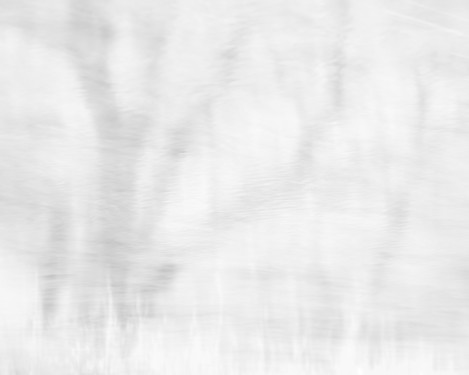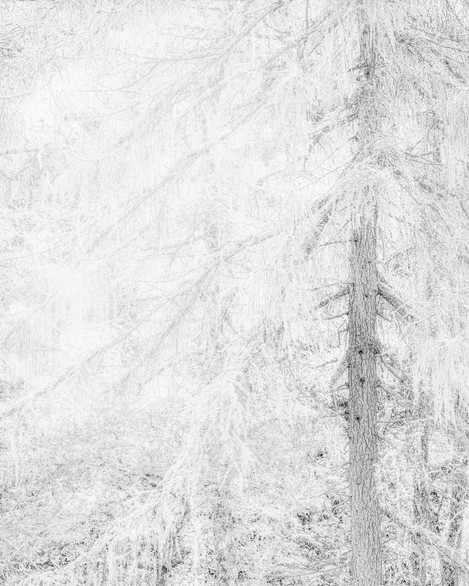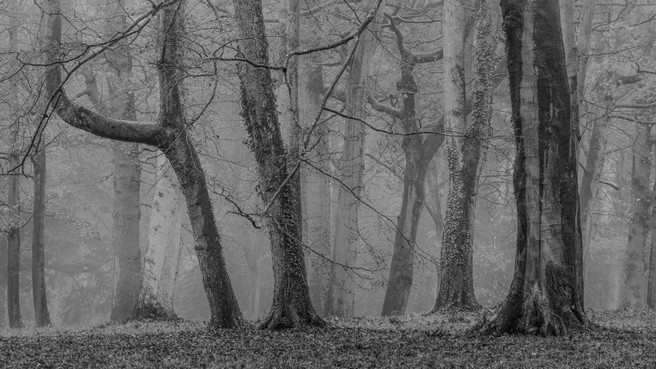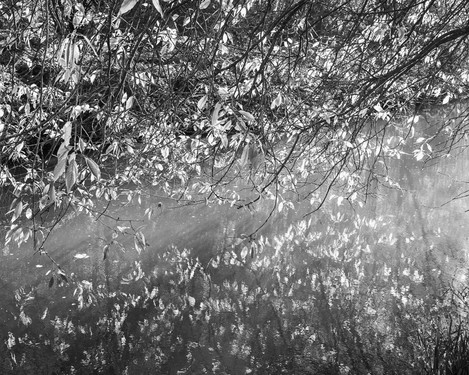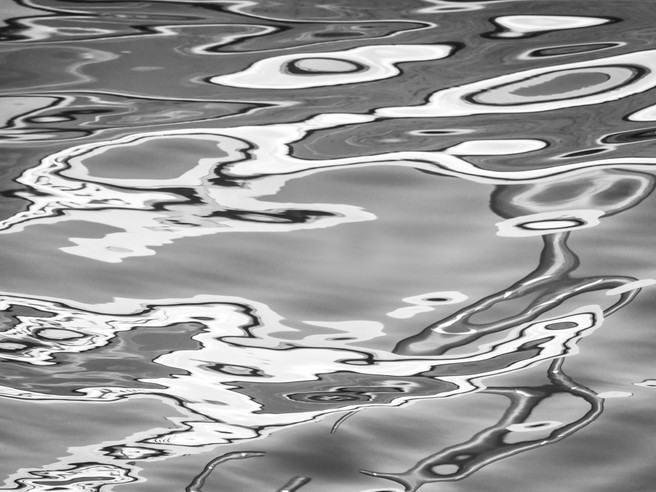Focus On 'Solitude Photography' at Joe Cornish Gallery

Kate Somervell
Black and white photographer Kate explores the landscape with an eye for detail. Producing highly creative images using a range of techniques from high key to double exposure, and from camera to print. Her connection with the landscape is evident in her work. She is inspired by locations from the coast to deep woodland, and her images depict her love of water and trees. Some of her images are very abstracted and require some deciphering. Kate particularly enjoys the challenge of producing images that promote contemplation beyond the first glance. Her favourite locations include Scotland and the North of England, especially North Yorkshire where she lives.

Charlotte Parkin
Head of Marketing & Sub Editor for On Landscape. Dabble in digital photography, open water swimmer, cooking buff & yogi.
Kate Somervell is the first photographer to be under the spotlight as part of the 'Focus on" feature at Joe Cornish Gallery. The exhibition which runs from Saturday 11 May - Saturday 11 August.
We caught up with Kate ahead of her exhibition to find out more about what inspired her photography, her style and the challenge of producing a series of works.
What sparked your passion for photography?
Like many other photographers of a similar vintage, the words Kodak Instamatic may well take you back in time. A mechanical treasure with resounding clunks and clicks and a cartridge film. Having captured enough images to fill the cartridge often took some time, the random subjects included the countryside, beach walks with the dogs, family picnics, the odd birthday or family gathering. Finally, the cartridge was taken to the chemist for developing. The anticipation and excitement usually only lasted until the prints were collected, only to be followed by the crashing disappointment when looking at the results. The blurred images, head or a limb missing, and then the range of oh so helpful advice stickers telling me to hold the camera still, or whatever technical disaster I had achieved next, there were many. The carefree days of not having to worry about what was in focus or not, and what on earth did aperture or depth of field mean anyway, and as for composition?
At school, I did nothing to impress my art teachers, and painting or drawing were never within my grasp. But I loved handling a camera and I shot colour film for many years, albeit in a fairly random way. By now every walk was accompanied by a camera, and I was recording the countryside. The excitement of getting the prints back was never lost, and occasionally I got everything into the frame, however, I still understood nothing about light!
Many years later, I managed to free up some time and decided to learn photography. It was a very conscious decision and one I have never regretted, and I am still learning every day. My ambition at the time was to learn to take a half decent image. I had no idea this wonderful addiction would become a major part of my life that it has. It was early on in the days of digital photography and the quality was improving by the week, and so off I set off on my new adventure. I really just wanted to capture the magic of the countryside, the big sweeping views, the colour…or so I thought.
Why did you choose landscape photography as opposed to other genres?
Initially, I just wanted to record the world around me so it wasn’t really a decision as to what genre. In the early days, I was unaware of how many different genres there were. I wanted to capture big vistas as I saw them. That was what I saw, what I knew and where I felt comfortable.
Whenever I get stuck or inspiration fails me, the most effective remedy is to change genre. I love to go and shoot some architecture or visit a city as I find the different challenges and change of environment really help me fine tune my vision when I am back in the field. A good walk with no camera can be equally effective.
Tell me about the photographers or artists that inspire you most. What stimulated your interest in photography and who drove you forward, directly or indirectly, as you developed?
There are so many artists and photographers whose work I admire. I was lucky to study art history years before photography took over! From Turner’s treatment of light or the clouds in a Constable to the exquisite detail in a still life by de Heem. The power of observation and interpretation is there for all to see if only we looked.
Going to exhibitions can be influential and inspirational. Last year The Shape of Light at Tate Modern was extraordinary and I visited a couple of times, it still wasn’t enough!
So many images have struck a chord with me from Edward Weston’s shells or dunes to the hauntingly beautiful images in the books of abandoned buildings by Simon Marsden. Graham Cook’s recent exhibition at the Joe Cornish Gallery, InnerVisible is a staggering collection of truly inspirational abstract works of art.
Fine tuning my vision over the years has been helped massively by the input of many photographers and writers, including Joe Cornish and David Ward. Duncan McEwan, Phil Malpas, Clive Minitt, Eddie Ephraums and Paul Sanders have all been major contributors to my development as a photographer.
Elizabeth Roberts, Editor of Black and White Photography, is the most extraordinary editor and writer, photographer and teacher with her skill in drawing both words and images from people in the most encouraging way.
I am hugely indebted to Charlie Waite, who originally suggested I concentrate on black and white many years ago, and also, for Light and Land which has been such a huge stepping stone through the best of its leaders.
Thank goodness you all have a sense of humour, and we have enjoyed much laughter over the years.
You enjoy the challenge of producing a series of work. Tell us more about how you approach this and develop a series of images.
This has resulted from doing several Open Studio Workshops with Adrian Hollister and Eddie Ephraums in Wester Ross. Whatever the subject, there is always an outcome which more often than not is a series or set of images. These can be made into a series of sequenced prints or made into a book.
Sometimes I shoot a specific location or subject. Some series can be either a day or a week’s work, other times they can be much longer-term projects which evolve during the process and can end up very differently from the initial idea. Keeping an open mind and letting go of fixed ideas is really important. A seemingly stand-alone image shot today may become part of a series next month.
Who has specifically helped you in realising your photographic ambitions over the past few years?
The more photography I do, the more I realise the importance of collaboration. Attempting to do everything on our own is an uphill struggle. Sharing ideas and images with other people whether photographers, artists, gardeners or designers can be both supportive and instructive.
My heartfelt thanks to Joe who has given me an incredible opportunity to exhibit at the Joe Cornish Gallery. This has inspired me to keep making images so I can develop as a photographer.
It is wonderful to work with Jo Rose, Curator at the Gallery, who has been incredibly supportive. Some work has been accepted and some rejected, and I keep learning and improving. I am lucky to live locally so I am a regular visitor and to have such a great photographic resource on my doorstep is fantastic. And I couldn’t achieve any of this without the technical wizardry of Mark Banks.
Looking at the gallery on your website, I can see that you enjoy experimenting with different techniques in both photography and printing, as well as producing black and white images. Tell us about the various techniques including digital photogravure, that you have used and how you go about learning and developing a new technique.
Some techniques are relatively easy to learn as you go such as double exposures, where it really is just a matter of experimenting, trying things over and over again until you start to get the results you are hoping for.
Polymer solar plate photogravure printing is a modernised version of copper plate printing. Firstly, the digital image is printed onto acetate on an inkjet printer. The acetate is then placed onto the polymer coated metal plate and exposed to UV light in a vacuum chamber, this hardens the polymer of the lighter areas and leaves the dark areas soft. The plate is then rinsed in water and dried and re-exposed to UV light. Then the plate can be inked and wiped before it is placed onto a dampened piece of paper and manually pulled through a traditional etching press. Every print made involves this latter part of the process so it is both intensive and time consuming.
It was wonderful to be involved in a process that was both mechanical and physical, very far removed from digital ways and pressing the button on a printer.
What new techniques have you tried but not continued with and why? What has worked and you’ve then incorporated into your photography?
There is such a variety of techniques to try, and I find it fun experimenting. Personally, I really struggle with ICM and it is the least successful and therefore least used of the techniques I have tried. It has become incredibly fashionable, and in my opinion, can be greatly overused! Occasionally, however, somebody produces an image that is
staggeringly beautiful. Never say never….
On the other hand, I love shooting double exposures. Creating them in camera is truly challenging, to get two perfect compositions that really work together to form one final image is very satisfying. I haven’t yet got to multiple exposures; I am sure it is a matter of time……
You have a defined style which concentrates on tone, texture and structure, and some of your black and white landscape images are very abstracted. How have you developed your style? Has this changed or evolved over time?
Over the past decade, my style has changed drastically. From the early ‘colour, wide vista’ days to the black and white images of today. This really is the result of taking thousands of images and more importantly to sharing work and being helped by some amazing photographers. I have been incredibly lucky to meet so many people who have helped me while starting to understand a little more about both photography, and myself.
I now have more time for photography, to try new techniques, and digital photography has given me the freedom to experiment. The instant feedback on the LCD at least gives us a guide to whether something has potential or not.
The most significant change is that I think my visual awareness has developed and I see better, there has been a downward spiral in my stress levels and I am much more connected to my subject, and I give myself permission to experiment, and if something doesn’t work, it doesn’t matter. There is always another way.
Your website is called ‘Solitude Photography’ rather than just your name like most photographers. Can you give us some background on the name and the significance for you?
Like many other photographers, I am happiest on location and hiding behind the camera. This seems to be true for virtually every photographer I talk to. Sharing work is extremely important, it can inform, educate and inspire. At the same time can make us feel vulnerable, and for many, exhibiting is about the work more than the photographer. The name Solitude Photography works for me on several levels. Landscape photography can be a solitary existence. We are often alone in the field, processing, and printing. It can be really valuable to share work in progress, to get help with editing, advice on things that work together. This needn’t be with other photographers, but sometimes other creatively minded souls. I hope many of my images convey a sense of peace, even though some are much busier, others more ethereal.
The Joe Cornish Galleries are launching a new series of exhibitions for gallery photographers called Focus On, where their work will be displayed for a three month period.
You’re the first photographer to display their work in this new series of exhibitions. Tell us how that came about and what you’re most looking forward to for this exhibition.
Jo Rose, Curator at the Joe Cornish Galleries really understands the value of sharing work. I have been showing work here for some time and I had a mini exhibition called Life on a Lead which was a fun way to start. I am lucky to live in North Yorkshire so I can visit regularly and I think Jo could see commitment, determination and ambition as well as the ability to deliver. We had been talking initially about displaying the photogravure series, and then she approached me with the idea of ‘Focus On'. This gives the Gallery Photographers a fantastic opportunity to engage with their work on a different level, and for a much longer period, and to engage with visitors and to hear their opinions.
Events including talks and ‘meet the artist’ means we can share our work on a much more personal level, to talk to visitors and get feedback on our work. This is not an exhibition in the truest sense or a complete body of work, but about showing a greater variety and depth of work, seeing what works and doesn’t, and what visitors respond to.
It is both a privilege and a responsibility to be the first photographer in the ‘Focus On’ series, and it is probably the only time in my life where I will be followed by David Ward!
Tell us about the images that you’ll be exhibiting. Will you be displaying a new series of work?
The images are quite a mixture, and that is the whole point about Focus On…because it is an opportunity to show a wider selection of images than one might show in an exhibition.
Firstly, there is the limited-edition series of photogravure images of reeds which were shot and printed in Spain.
The other images show a much wider variety of both subject and style. From woodland to the coast, with double exposures, high key and abstract images all included. The majority were shot in North Yorkshire, and others from Venice, the Lake District
and Scotland
If it is a series of work that you are exhibiting, how are you approaching the sequencing of the images in the exhibition? What visual and non-visual narrative do you want to leave the audience with?
The exhibition space in the room is divided up by doorways, windows, bookshelves and a mantlepiece. This structure breaks the space down into smaller groups which is great.
The photogravure series of reeds will be displayed on one wall, along with acetate and plate and a brief description of the process.
The remaining images will be subdivided into smaller groups and the sequencing will be led predominantly by tonal range.
Although I have measured the space available and done basic layouts, it is really important to be flexible. One can suddenly see new combinations that are a complete revelation. However, this may well change depending on what looks right and Jo Rose and I think on the day.
I love being outside and surrounded by the natural beauty of the world around us. I feel a strong connection with the landscape, and it would be wonderful if the audience could relate to an image on some level, whether it is how an image looks or feels. Sometimes we need to slow down, be still or look for longer. Whether it is walking in a park, or past a tree on the street, stop and look, and look again, now what do you see.
The slower I work in a location the more potential images I see. This is about being receptive to the world around us, and to find moments of peace or calm in this frenetic world we live in. Just ‘being’ is a great thing to achieve as it seems we spend our lives always ‘doing’. That solitude, peace and stillness, is there if we choose it.
Tell us more about the printing and framing of the images for the exhibition e.g. paper, size etc.
The photogravure series are printed on various handmade or Somerset papers which are off white and textured. The paper is hand torn before printing which gives a deckled appearance. They are float mounted in a box frame.
Image/Plate size is 122 x 152, paper (approx.) 198 x 260, and frame 357 x 410. All the other images I printed on Fotospeed Signature Platinum Baryta 300 and close mounted, and both sets are in limed oak frames. Image 98 x 127, Frame 325 x 340.
I am indebted to Andy, Paul and the team at Wensleydale Galleries in Leyburn for their patience and all the trials we did in getting to the final stage of mounting and framing or the exhibition.
Tell me what your favourite two or three photographs from the exhibition are and a little bit about them.
That is a tough call! The three images I have chosen all have one thing that unites them, I keep discovering new details in them, details I hadn’t noticed before.
I love working in mist and fog, although it can be a battle to keep lenses dry. Judging when it is going to clear can be tricky as then the light can change very quickly. This woodland image was just one of those moments and I love the depth within it.
When I was first playing with double exposure, I was shooting autumn woodland, so there were lots of beech leaves on the ground. I tried many different combinations over quite a length of time and then one day it suddenly came together.
Water abstract holds my attention, simple yet complex.
What sort of post processing do you undertake on your pictures? Give me an idea of your workflow.
As little as possible! Post processing is the least enjoyable part of photography for me. However, it is the necessary evil on the route to producing a good print. I use both Lightroom and Silver Efex, the latter I find particularly effective in the treatment of mid tones. Later in the year, I will revisit Photoshop which I think I will use for specific
techniques and that may seem less daunting.
What is next for you? Where do you see your photography going in terms of subject and style?
I have some ideas rattling around for a book which I started this year and will continue
to work on next year, and maybe beyond. In terms of subject and style, I honestly do not know, and that is fantastic.
Many thanks, Kate for your time. Kate's exhibition runs from Saturday 11 May - Saturday 11 August at the Joe Cornish Gallery.
Kate will be in conversation with Joe Cornish at the Galleries on the afternoon of Thursday 16 May and will also at the gallery for 'Meet the Photographer' event on Saturday 13 July.

